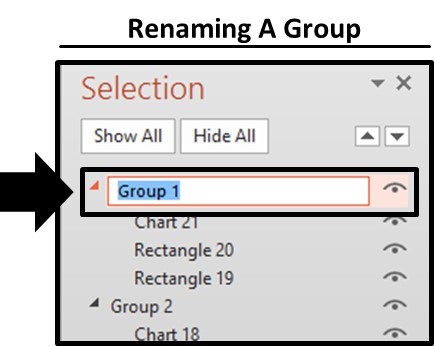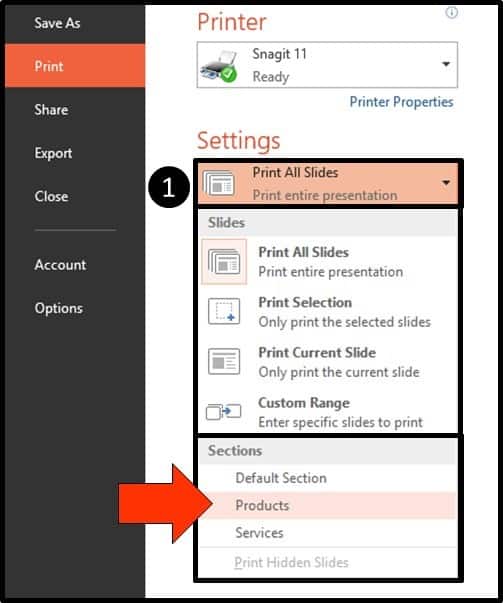Ultimate Guide To Powerpoint 2015
- Ultimate Guide To Google Adwords
- The Ultimate Guide To The Presidents
- Guide To Powerpoint Presentations
Once objects are grouped together, you can make them easier find and work with by naming them within the Selection Pane. That said, keep in mind that this is an OPTIONAL task. This is only beneficial when you are both working with lots of objects on your slide AND naming the individual groups makes sense (like adding ). Otherwise, this can be a huge waste of your time. If you still want to name your groups, follow these simple steps. Step #1: Open the Selection Pane In PowerPoint 2010 or 2013, hit ALT + F10 on your keyboard to open the Selection Pane.
The Ultimate Guide for Office 365 is divided into several sections. Download and install Office 2013/2016 desktop apps: Watch this video. Jun 5, 2017 - This guide covers Excel, SharePoint, Word, Outlook, Windows 8 and. Excel 2016, to SharePoint 2013, Word 2013, Outlook 2010, PowerPoint. Powerpoint 2015 ultimate guide to powerpoint 2015 ketojeniccom, ultimate guide to powerpoint 2015 if looking for the ebook ultimate guide to powerpoint 2015 in pdf format, then you.
In Microsoft 2007, navigate to the Home Tab, open the arrange tool dropdown and select the Selection Pane at the bottom of the dropdown (see picture below). Although naming groups CAN make working with busy slides much easier, I want to point out that you lose your group names whenever you ungroup your objects. For example, continuing my example above, after naming my group to ‘Product 1’, if I now ungroup that Product 1 group, I will FOREVER lose the ‘Product 1’ name. If I then group those objects back together again, PowerPoint will go back to a default ‘group’ name, forcing me to rename it again to ‘Product 1’ (assuming I really want that ‘Product 1’ group name for those objects). As such, if you are just starting to build out your slide and you know you will be frequently grouping and ungrouping objects than heed this advice: THEN DON’T WASTE TIME NAMING YOUR GROUPS. Otherwise you will unintentionally WASTE a lot of time naming and renaming groups your PowerPoint groups, instead of focusing on the most important aspect of your presentationyour content. If you are going to name your groups, it’s usually best to do it at the end of your slide design process (unless you are using them for ) and only invest the time if it actually makes working with your slide easier.
Rock shox sid xc specs, rock shox sid xc manual, rock shock sid, rock shox sid sl, When opened, Rock Shox Reba Sl Service Manual for Mac presents you. Service Manual 2017-2019 Reba and Bluto (4.76 MB) Rev D. English: 2018: Service Manual 2017-2019 Reba and Bluto Spanish (4.77 MB). SRAM.com > Service Resources. Service manual reba. ROCKSHOX SUSPENSION SERVICE We recommend that you have your RockShox suspension serviced by a qualified bicycle mechanic. Servicing RockShox suspension. Email Updates. Sign up to receive updates from SRAM and other affiliate SRAM Brands.
If you’ve ever tried grouping objects together in PowerPoint and it doesn’t workthen you have just discovered what few people realize NOT all PowerPoint objects can be part of a group. Here is a quick list of objects that can NEVER be part of a PowerPoint Group, but that doesn’t mean they can’t be ungrouped. Tables – amongst the many downfalls of tables in PowerPoint, tables cannot be part of a group (ever).
If you decide not to ungroup your table, it’s usually best to first layout your other objects on your slide, and then using the alignment tool, fit the table into the correct position within your layout. SmartArt graphics – although a special type of PowerPoint group itself, SmartArt graphics themselves cannot be part of a group with other objects, including other SmartArt graphics. Content Placeholders – content placeholders are defined as anything set on your Slide Master that is editable in the Normal View of your presentation.
This includes things like titles, sub-titles, page numbers, etc. These content placeholders cannot be part of a group and there is currently no workaround that I’m aware of. The vast majority of objects can be grouped: Everything else in PowerPoint can be part of a group, including other groups of objects that you have already grouped, pictures, images, charts, shapes, text boxes, vector graphics, etc. Regrouping (covered in detail below) re-establishes an ungrouped group, without having to reselect all of the objects and group them again. For example, if you ungroup a group of 32 different objects (a complicated graphic) so you can format some of the individual pieces.
To reform the original group, you only need to select 1 of the 32 objects, select regroup and the entire group (including all 32 objects) will reform. To use the regroup command, you can right-click an object with your mouse, and in the grouping menu option select regroup (Keyboard shortcut CTRL + SHIFT + J). Check out an example of. How to do it: The trick to ungrouping a table or chart is that you first need to copy and paste it in one of the two Windows MetaFile Formats (which doesn’t work on a Mac). After copying your object, use the paste special keyboard shortcut ALT + SHIFT + V to open the Paste Special dialog.

Within the dialog box, select one of the two MetaFile formats (it doesn’t matter which one), hit okay and your table or chart will paste in as a Metafile picture. With the picture interested, simply select it and ungroup twice (CTRL + SHIFT + G), and the picture will break apart into shapes, lines and text boxes. When is this useful: Ungrouping tables and charts is useful in two different scenarios: #1: You want to create your own unique graphic out of the contents of the table or chart.
For example, instead of using a table as is, you want to break it apart and build your own unique layout without retyping any of the text. How to do it: With a SmartArt graphic selected, simply ungroup twice (CTRL + SHIFT + G on your keyboard) and just like a Metafile, the SmartArt graphic will break down into normal shapes, lines and text boxes. When is this useful: This is useful when you want to move beyond the limited formatting options of SmartArt. SmartArt itself is a group of objects in PowerPoint that will automatically resize itself based on the text and shapes you add to it. Yes, the automatic resizing can be useful when you are first building your graphic, but it can also be annoying when you are trying to finalize your graphic and incorporate it in your layout.
By ungrouping your SmartArt graphic into normal PowerPoint shapes, you have SIGNIFICANTLY more freedom to customize and build your own unique layout. Keys to remember about transposing or inversing your layouts: #1: Rotating as a single object – when objects are part of a group, the entire group will rotate as one single object.
#2: Rotating as individual objects – When objects are ungrouped (or not part of a group), each individual object will rotate on its own. Combining these two rules with the grouping (CTRL + G) and ungrouping (CTRL + SHIFT + G) shortcuts, you can quickly flip your layouts, giving you more layout options for your graphics. Regrouping is the fastest way to recreate a set of ungrouped objects and we’d LOVE IT if Microsoft made a keyboard shortcut for it as well (fingers crossed). Now the regrouping critics will say: “WHO CARES about the regroup command when I can easily just select my two or three PowerPoint objects and use the CTRL + G shortcut to group them.” Well, if you are only regrouping a couple of objects, I agree.


On the other hand, if you are regrouping 5 different groups of objects (at the same time) or regrouping a COMPLICATED vector graphic with over 50 objects (see picture below), THAT’S when the regrouping command is a lifesaver. Besides being able to group objects in PowerPoint, you can also group slides together into sections. Once your slides are grouped into sections, you can rename the sections, move slides in and out of those sections, move the sections around within your presentation (thus moving the entire group of slides) and/or print those individual sections. This is a great technique when splitting up a deck amongst your colleagues to work on, as each of your colleagues can easily print and work with their own group or section of slides. Step #1: Right-click and add a section The fastest way to add a section, or group slides in PowerPoint, is to right-click the slide in the thumbnail view on the left that you want your section to start at, and from the right-click menu select Add Section. The advantage of grouping your slides in PowerPoint, is that you can then print those individual groups.
This is useful when working on a specific portion of a presentation, and you want to print only a specific portion of the presentations. With everything broken into sections, instead of trying to identify a specific range of slides (for example slides 10 through 50), if those slides are grouped into a section, you can simply print that individual section. To print a specific section, follow these steps. Step #1: Navigate to the print menu With the slides in your presentation already broken into groups (see above for how to group slides), hit CTRL + P on your keyboard to navigate to the printing options.
Ultimate Guide To Google Adwords
The best to navigate between the outline view and the normal view is with the PowerPoint shortcut: ALT + SHIFT + TAB This shortcut opens and/or closes the outline view, displaying either the normal thumbnail view of your slides or the outline view of your content. Notice how in the outline view (see pictured above), instead of seeing the thumbnail preview of the slides (with the respective graphics) you only see the text that is in the content placeholders. And this makes a BIG difference!
The text you type into normal shapes and text boxes will NEVER show up in the Outline View, only the text that is the content placeholders that are set on the Slide Master. Only text that is typed into Content Placeholders will show up in the Outline view. What’s a content placeholder? Content placeholders are objects that you (or someone) set on the slide master of your presentation. These are objects like titles, subtitles and any other ‘type to add text here’ type of objects. These types of placeholders can only be set on the Slide Master, and it’s only the text typed within these placeholders that shows up in the Outline View of your presentation. So if you move to the Outline View (CTRL + SHIFT + TAB) and don’t see your slide’s text there, it means that your text is not in a content placeholder, it’s likely in a normal shape or textbox that has been added to your presentation.
All of the other normal shapes and text boxes that you add to your presentation in the normal view, WILL NOT show up in the outline view of your presentation (no matter what you do). When using the Outline View shortcuts, remember that for most of them to work (like collapse groups ALT + SHIFT + 1 and expand groups ALT + SHIFT + 9) you need to rotate to the Outline View to activate it. To rotate (or activate) the Outline View is to first open the outline view (CTRL + SHIFT + TAB) and then rotate active panes counterclockwise (SHIFT + F6). If you are brand new to shortcuts, my advice is to just first start with the open/close Outline View shortcut (CTRL + SHIFT + TAB). If you are an intermediate to advanced user and will be frequently using this view, then it’s worthwhile learning how to activate and navigate this view entirely from your keyboard.
The Ultimate Guide To The Presidents
Another overlooked feature of the Outline View is that you can print it. This is useful when you have a large presentation and you simply want to see what it looks like based on the Titles, sub-titles and other content placeholders.basically your slides minus all of your graphics, pictures, etc. To print your outline view, simply follow these steps.
Step #1: Navigate to the print options On your keyboard, hit CTRL+P to open up the print options for your presentation. Step #2: Navigate to the Outline View Within the print options, select the ‘Full Page Slides’ dropdown (the default setting) and within the menu in the upper right-hand corner, select the Outline View. If you frequently print the Outline View of your presentation, you can customize it with your own personalized branding (colors, logos, etc.). This is particularly useful if you plan on sending the print out of the Outline View around. To customize your Outline View, follow these steps. Step #1: Navigate to the Handout Master There are two ways to do this:.
From the view tab, select the handout master icon. Holding the SHIFT key on your keyboard, click the slide sorter command at the bottom of your screen. This SHIFT + Slide Sorter shortcut is a hidden shortcut. To see other hidden PowerPoint shortcuts, see our article on. Step #2: Navigate to the Outline View framework Within the Handout Master view, open up the slides per page drop-down. So this is where you can select the different formats of your slides when printing them as handouts, depending on how many slides you plan to print per handout. These options line up directly (plus some like the Notes Page) with the handout print options available as showing in the picture below.
Don't forget to format your presentation Importing an outline like this is a great way to jump start your presentation building process, but don’t stop here. Your outline will always import in the most DEFAULT blank presentation style with only the Title and Content container slide layout. This default look DOES NOT make for an effective presentation, so you will want to make sure to apply a theme and work on incorporating visuals like charts, tables, pictures, etc.
To make your presentation more effective. Step #3: Find your outline document Find your outline document (I usually just save mine in Word) and click okay. Note, if you are using a Mac, you need to save your Word document in the Rich Text File (.rtf) format. If your outline is formatted correctly, your text will import correctly in the title and content container placeholders. If not formatted correctly, each line of text from your outline will import as its own individual slide.
Guide To Powerpoint Presentations
To fix this, you need to use the Title style and Heading 1 styles in Word. Don't forget to format your presentation Importing an outline like this is a great way to jump start your presentation building process, but don’t stop here. Your outline will always import in the most DEFAULT blank presentation style with only the Title and Content container slide layout. This default look DOES NOT make for an effective presentation, so you will want to make sure to apply a theme and work on incorporating visuals like charts, tables, pictures, etc.
To make your presentation more effective.